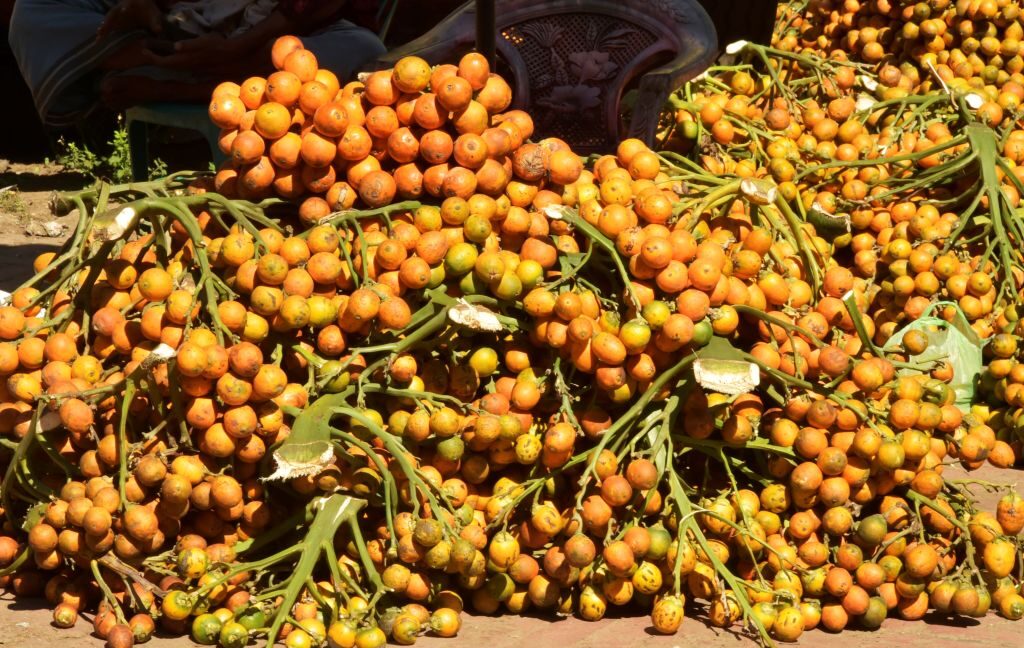Science
Ancient Evidence of Betel Nut Chewing Surfaces in Thailand

Recent archaeological findings in Thailand have unearthed compelling evidence of betel nut chewing dating back **4,000 years**. This discovery, made at the Bronze Age burial site of **Nong Ratchawat**, challenges previous assumptions about the cultural practices of ancient societies in Southeast Asia.
Betel nuts, derived from the fruit of the **areca palm**, have been consumed for millennia across the region. When chewed, these nuts release psychoactive compounds that enhance alertness and induce feelings of euphoria. Traditionally, they are wrapped in betel leaves along with lime paste, which is often made from powdered shells or corals, depending on local customs.
During the excavation, archaeologist Piyawit Moonkham from **Chiang Mai University** noted the absence of the distinctive red stains typically associated with betel nut chewers. This led him to initially conclude that the individuals whose remains were found were not users of betel nuts. However, further analysis of dental plaque from one skeleton revealed the presence of compounds unique to betel nuts, indicating alternative consumption methods or effective teeth cleaning practices that concealed the usual staining.
In a study published in **Frontiers in Environmental Archaeology**, Moonkham explained, “We found that these mineralized plaque deposits preserve multiple microscopic and biomolecular indicators.” This research opens up new avenues for understanding the dietary and cultural practices of ancient communities.
The practice of chewing betel nuts in Thailand has a long history, extending back at least **9,000 years**. During the **Lanna Kingdom**, which emerged in the **13th century**, stained teeth from betel chewing were regarded as symbols of beauty. Although the tradition is declining today, it remains integral to some religious ceremonies and social gatherings, particularly among ethnic minorities and rural communities.
Innovative Research Techniques Reveal Hidden History
Traditionally, archaeologists have relied on visible staining and the presence of betel nut fragments in teeth to identify ancient chewing practices. Moonkham’s team, however, adopted an innovative approach by examining biological traces within dental plaque. Previous studies had shown that dental plaque could provide insights into the diets and health of individuals from past civilizations.
At Nong Ratchawat, researchers sampled plaque from six individuals, focusing on those with mostly unstained teeth. They prepared various combinations of betel nuts, leaves, and lime paste to simulate the chewed product, allowing them to analyze the resulting chemical signatures.
The results were intriguing. Traces of **arecoline**, a stimulant found solely in betel nuts, were identified in all reference samples and in the plaque from three archaeological samples, including that of a woman with unstained teeth. Although the evidence was somewhat degraded, the chemical formula was sufficient for identification.
Furthermore, the same woman’s teeth showed signs of **arecaidine**, a compound formed when arecoline interacts with lime. This finding indicates that she was likely the only individual among the studied remains who chewed betel nuts.
The significance of this solitary case raises questions about the social dynamics of betel nut consumption in ancient Thailand. The woman was buried with unique clay vessels and stone beads, artifacts that could imply a certain social status, contrasting with the trend of stained teeth being more commonly associated with male burials.
Future Research Directions
The findings from this study suggest that betel nut chewing was indeed practiced by some individuals in Bronze Age Thailand, adding depth to our understanding of cultural habits in Southeast Asia. The research team posits that there is substantial potential for further biomolecular analysis of dental plaque from other burials at the site.
“Future ethnoarchaeological research will examine sociocultural aspects of psychoactive plant utilization, gender and age consumption patterns, and the evolving social and cultural roles of these practices among various Thai and Southeast Asian communities,” the researchers concluded.
This innovative approach to examining dental plaque not only uncovers hidden histories but also enriches our understanding of the complex cultural practices surrounding betel nut chewing.
-

 Science3 months ago
Science3 months agoToyoake City Proposes Daily Two-Hour Smartphone Use Limit
-

 Top Stories3 months ago
Top Stories3 months agoPedestrian Fatally Injured in Esquimalt Collision on August 14
-

 Health3 months ago
Health3 months agoB.C. Review Reveals Urgent Need for Rare-Disease Drug Reforms
-

 Technology3 months ago
Technology3 months agoDark Adventure Game “Bye Sweet Carole” Set for October Release
-

 World3 months ago
World3 months agoJimmy Lai’s Defense Challenges Charges Under National Security Law
-

 Lifestyle3 months ago
Lifestyle3 months agoVictoria’s Pop-Up Shop Shines Light on B.C.’s Wolf Cull
-

 Technology3 months ago
Technology3 months agoKonami Revives Iconic Metal Gear Solid Delta Ahead of Release
-

 Technology3 months ago
Technology3 months agoApple Expands Self-Service Repair Program to Canada
-

 Technology3 months ago
Technology3 months agoSnapmaker U1 Color 3D Printer Redefines Speed and Sustainability
-

 Technology3 months ago
Technology3 months agoAION Folding Knife: Redefining EDC Design with Premium Materials
-

 Business3 months ago
Business3 months agoGordon Murray Automotive Unveils S1 LM and Le Mans GTR at Monterey
-

 Technology3 months ago
Technology3 months agoSolve Today’s Wordle Challenge: Hints and Answer for August 19









